Abstract
Growing male domestic fowl of an egg-laying strain were fed ad libitum and injected intraperitoneally with melatonin or intramuscularly with triiodothyronine (T3) to study the effects on sleep, food intake, blood glucose, e.e.g., oxygen consumption and carbon dioxide production. Melatonin caused a dose-related depression of food intake with sleep and aphagia lasting for 2 1/2 hr following 8 mg, drowsiness and greatly reduced intake following 4 and 2 mg and a slight reduction in food intake after 1 mg. T3 injection was followed by increased feeding within the range 50-200 micrograms. The higher dose (200 micrograms) completely prevented the effects of 10 mg melatonin injected simultaneously. Melatonin (10 mg) depressed plasma glucose levels whereas T3 (200 micrograms) elevated blood glucose. Either darkness or melatonin (10 mg) caused an increase in amplitude and a decrease in frequency of the e.e.g. Birds fasted for 3 hr before injection showed significantly lower oxygen consumption and carbon dioxide production when given melatonin (10 mg); T3 had no effect within the 4 hr period after injection and did not modify the effects of melatonin. It is postulated that the rapid effects of melatonin and T3 which were observed result from direct effects of these hormones on the central nervous system.
Full text
PDF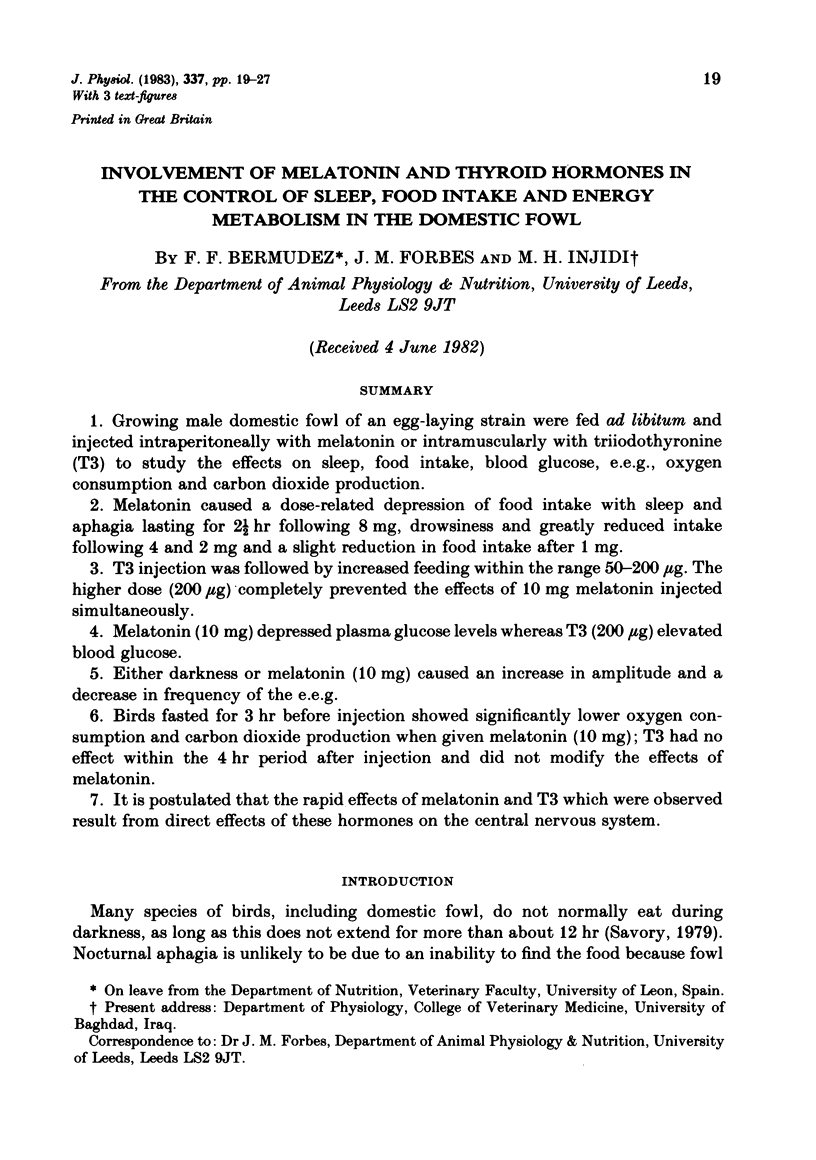
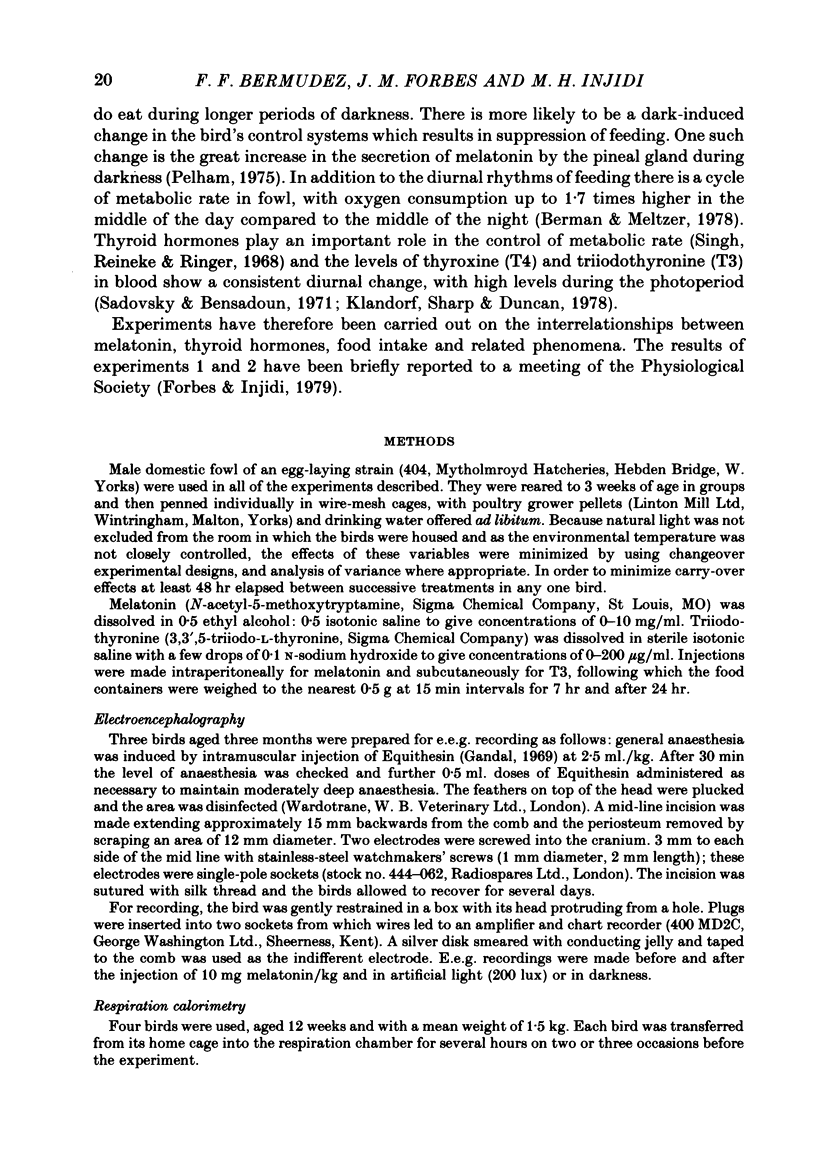
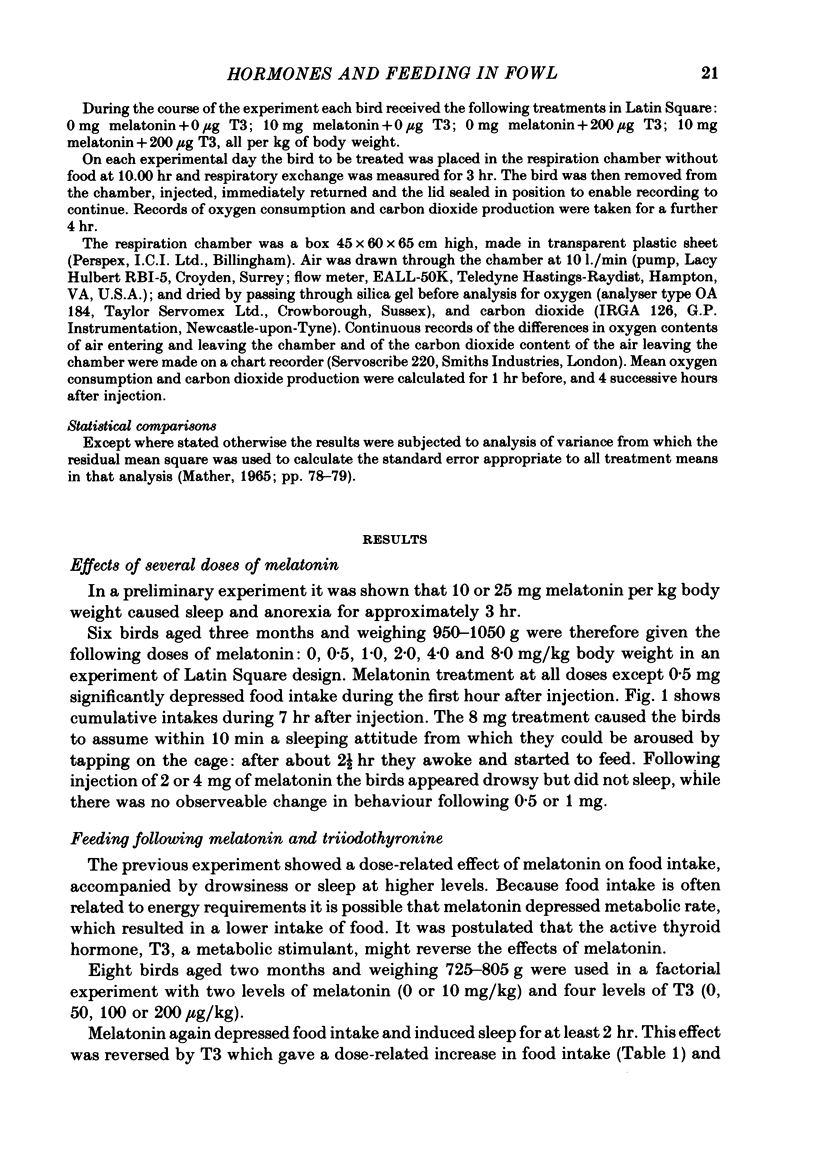
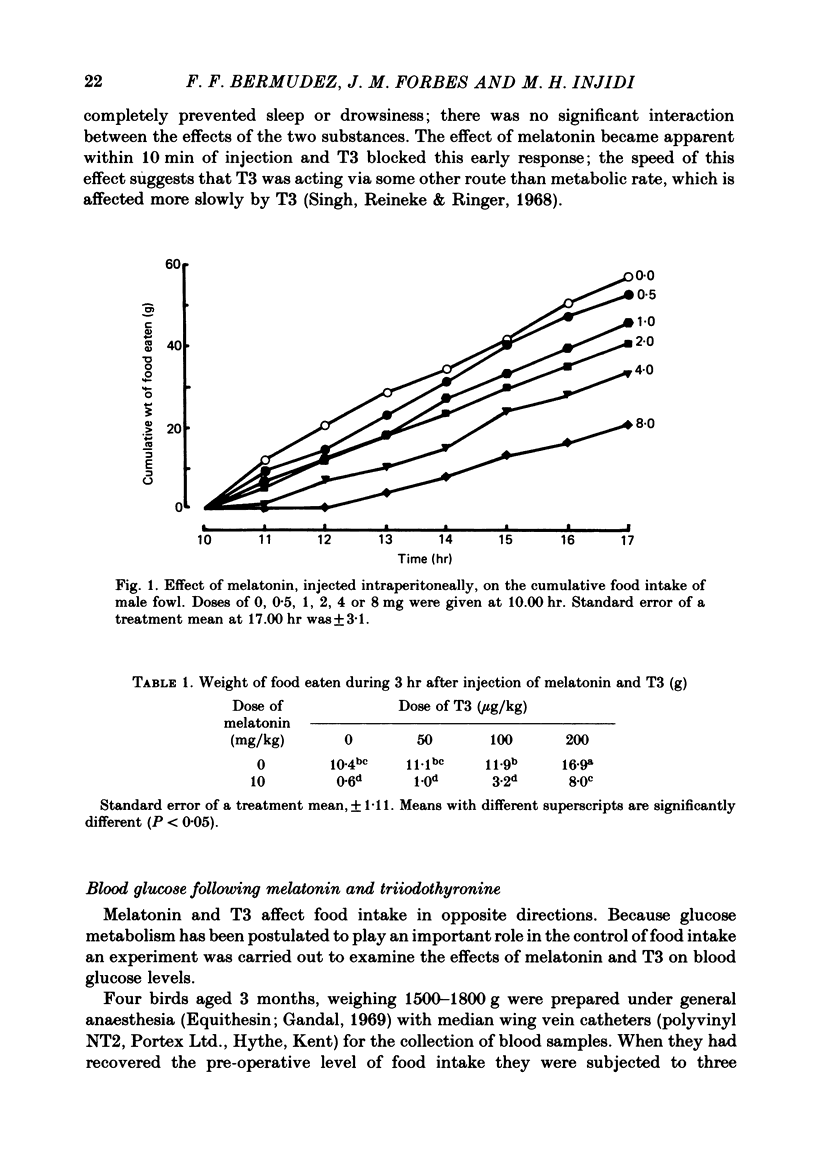
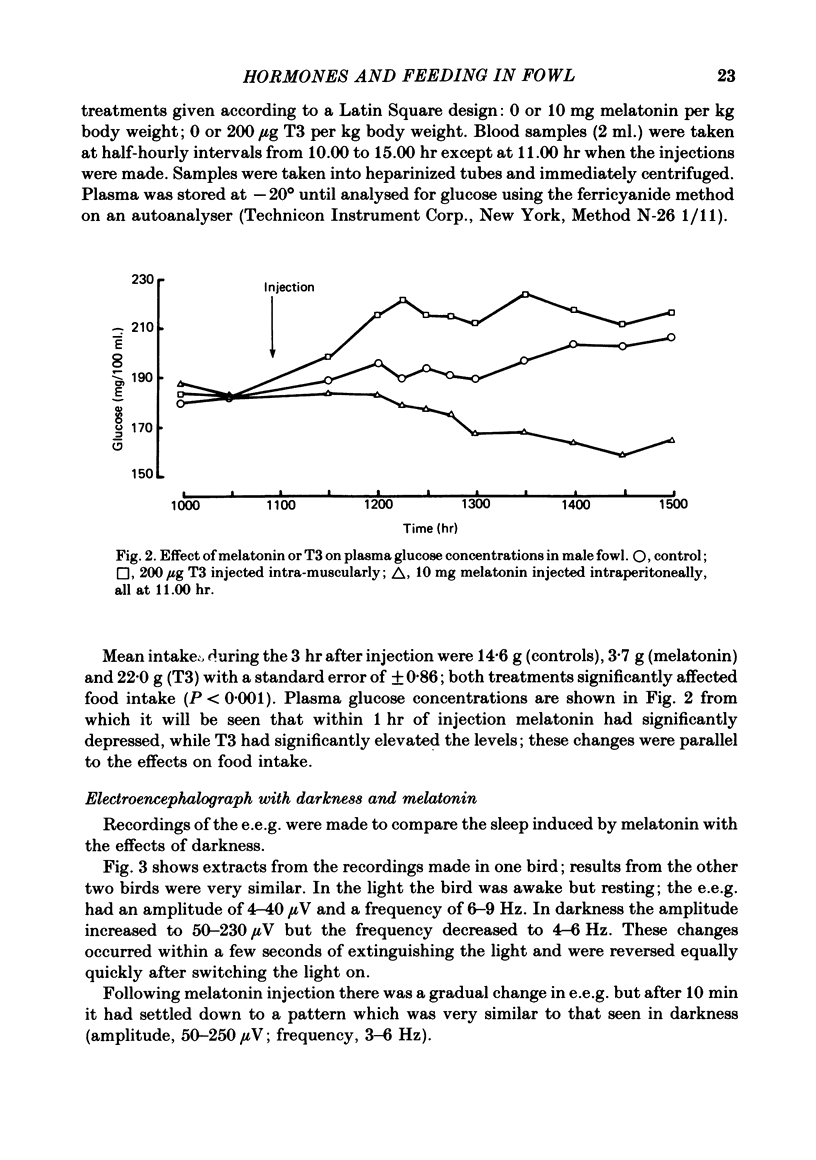
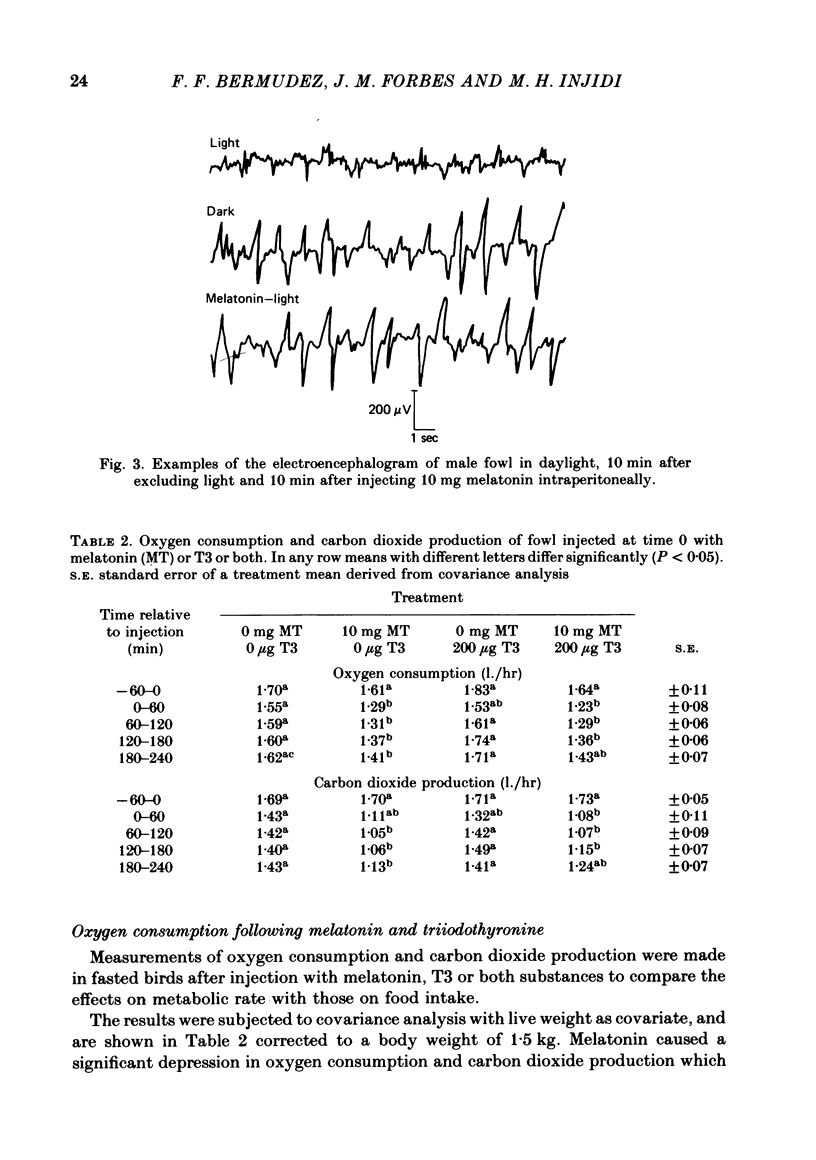
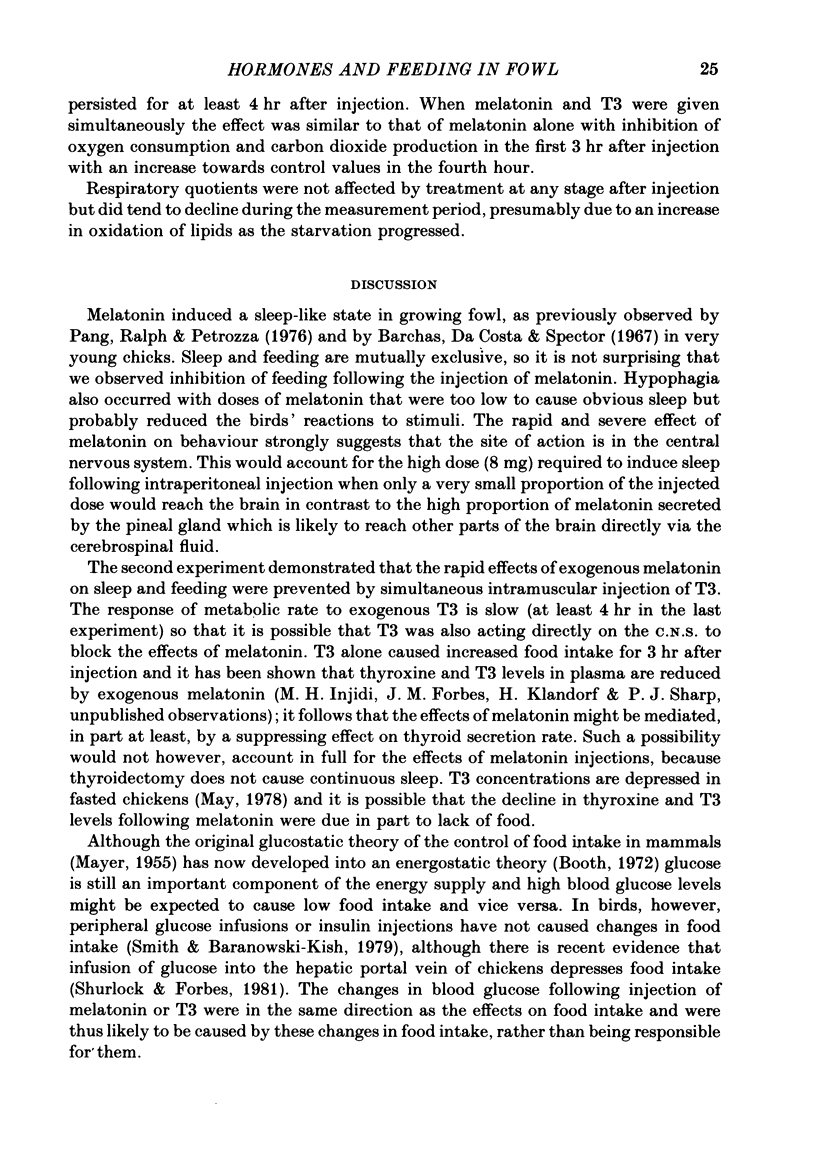
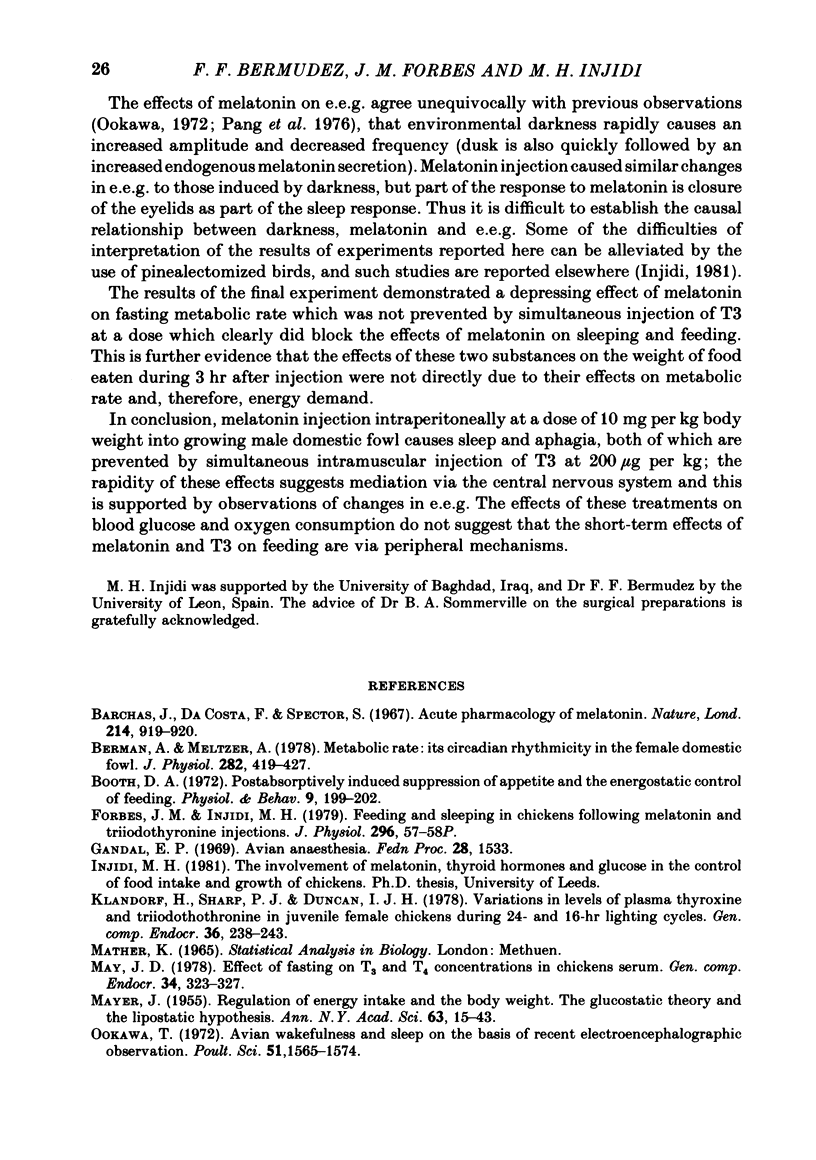
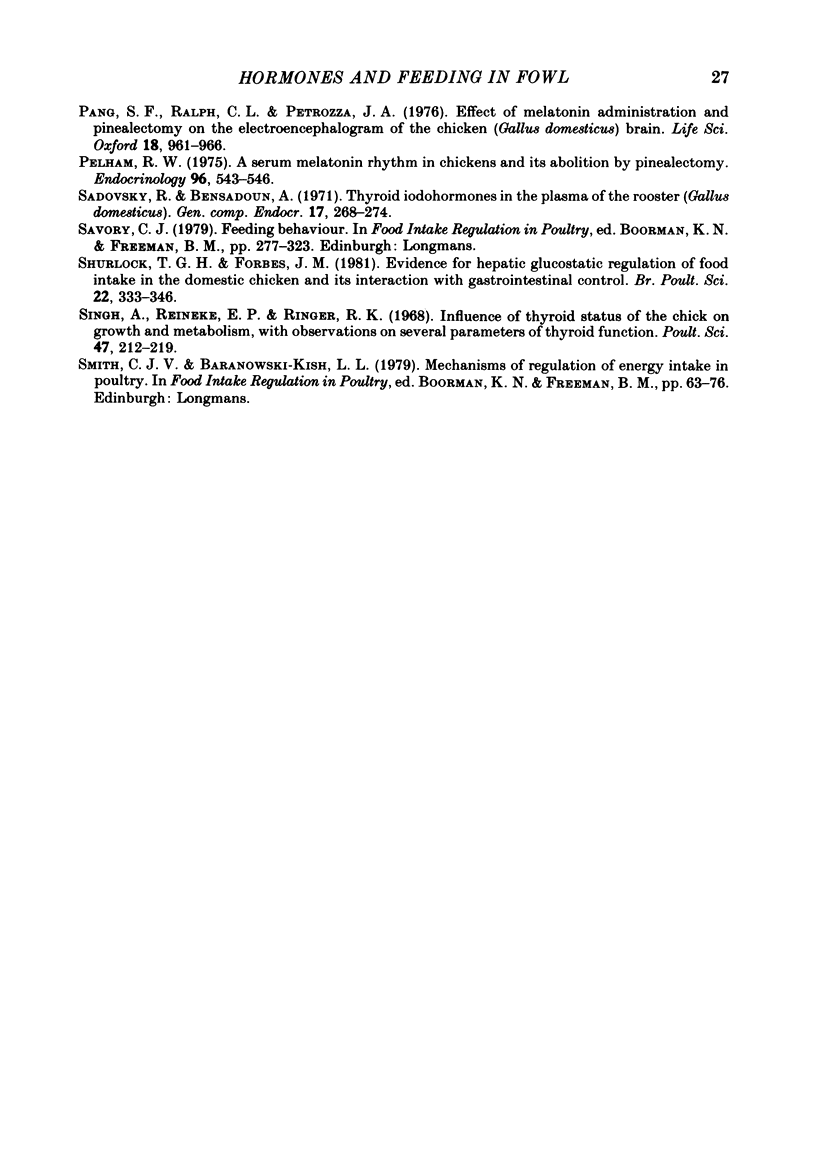
Selected References
These references are in PubMed. This may not be the complete list of references from this article.
- Barchas J., DaCosta F., Spector S. Acute pharmacology of melatonin. Nature. 1967 May 27;214(5091):919–920. doi: 10.1038/214919a0. [DOI] [PubMed] [Google Scholar]
- Berman A., Meltzer A. Metabolic rate: its circadian rhythmicity in the female domestic fowl. J Physiol. 1978 Sep;282:419–427. doi: 10.1113/jphysiol.1978.sp012472. [DOI] [PMC free article] [PubMed] [Google Scholar]
- Booth D. A. Postabsorptively induced suppression of appetite and the energostatic control of feeding. Physiol Behav. 1972 Aug;9(2):199–202. doi: 10.1016/0031-9384(72)90235-1. [DOI] [PubMed] [Google Scholar]
- Gandal C. P. Avian anesthesia. Fed Proc. 1969 Jul-Aug;28(4):1533–1534. [PubMed] [Google Scholar]
- Klandorf H., Sharp P. J., Duncan I. J. Variations in levels of plasma thyroxine and triiodothyronine in juvenile female chickens during 24- and 16-hr lighting cycles. Gen Comp Endocrinol. 1978 Oct;36(2):238–243. doi: 10.1016/0016-6480(78)90029-1. [DOI] [PubMed] [Google Scholar]
- MAYER J. Regulation of energy intake and the body weight: the glucostatic theory and the lipostatic hypothesis. Ann N Y Acad Sci. 1955 Jul 15;63(1):15–43. doi: 10.1111/j.1749-6632.1955.tb36543.x. [DOI] [PubMed] [Google Scholar]
- May J. D. Effect of fasting on T3 and T4 concentrations in chicken serum. Gen Comp Endocrinol. 1978 Mar;34(3):323–327. doi: 10.1016/0016-6480(78)90255-1. [DOI] [PubMed] [Google Scholar]
- Ookawa T. Avian wakefulness and sleep on the basis of recent electroencephalographic observations. Poult Sci. 1972 Sep;51(5):1565–1574. doi: 10.3382/ps.0511565. [DOI] [PubMed] [Google Scholar]
- Pang S. F., Ralph C. L., Petrozza J. A. Effects of melatonin administration and pinealectomy on the electroencephalogram of the chicken (Gallus domesticus) brain. Life Sci. 1976 May 1;18(9):961–966. doi: 10.1016/0024-3205(76)90415-x. [DOI] [PubMed] [Google Scholar]
- Pelham R. W. A serum melatonin rhythm in chickens and its abolition by pinealectomy. Endocrinology. 1975 Feb;96(2):543–546. doi: 10.1210/endo-96-2-543. [DOI] [PubMed] [Google Scholar]
- Sadovsky R., Bensadoun A. Thyroid iodohormones in the plasma of the rooster (Gallus domesticus). Gen Comp Endocrinol. 1971 Oct;17(2):268–274. doi: 10.1016/0016-6480(71)90135-3. [DOI] [PubMed] [Google Scholar]
- Shurlock T. G., Forbes J. M. Evidence for hepatic glucostatic regulation of food intake in the domestic chicken and its interaction with gastro-intestinal control. Br Poult Sci. 1981 Jul;22(4):333–346. doi: 10.1080/00071688108447893. [DOI] [PubMed] [Google Scholar]
- Singh A., Reineke E. P., Ringer R. K. Influence of thyroid status of the chick on growth and metabolism, with observations on several parameters of thyroid function. Poult Sci. 1968 Jan;47(1):212–219. doi: 10.3382/ps.0470212. [DOI] [PubMed] [Google Scholar]


